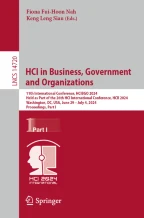Abstract
Due to children’s limited cognitive ability, children’s patients often suffer from fear and anxiety during treatment, which leads to resistance to medical treatment, and parents don’t know how to comfort their children, so the tension between doctors and patients in children’s hospitals has always been a thorny issue. Shanghai Children’s Medical Centre (SCMC), one of the best children’s medical institutions in Shanghai, was the first to set the goal of becoming a “no-cry children’s hospital”, and since 2014, the School of Design and Creativity in Tongji University has been establishing a design-driven collaboration with SCMC, aiming to improve children’s healthcare services and experience.
Hospitals are a systemic problem, made up of different roles, and different environments, and essentially a communication problem in connecting doctors, parents, and children. This paper is based on Richard Buchanan’s Definitions of system: The four modes of definitions of system: set, arrangement, group, and condition, of which set, and arrangement belong to the design thinking mode of problem-solving, which is also usually the way designers think about problems, but this design mode is not a good solution to the problem of communication between children, parents, and hospitals. This paper favors the thinking mode of CONDITION, which is the harmonious and orderly interaction of the whole, without the smallest part, close to the process of seeking truth, a mode of Assimilation, the process of mutual understanding and communication through natural life and extending to the social group. IP is such a bridge that it can communicate across media and at the same time assimilate each medium into a systematic ecology for its use. Through the children’s healthcare IP to solve the communication problem, to build a new concern of the three, so that people with different identities can be placed in it and understand each other.
Through researching 123 doctors and 121 families with children, we produced the “Courageous Planet” medical IP brand design based on children’s physiological and psychological characteristics and research in the medical field and then verified it to produce a business strategy model. The “Planet Courage” medical IP design aims to help doctors, parents, and children deliver messages and build emotional ties more effectively in the relatively special setting of a children’s hospital through the introduction of IP images. The name “Planet Courage” is centered on the word “courage”, hoping that every child is a little warrior who is brave enough to face up to illness and grow up healthy and happy.
Access this chapter
Tax calculation will be finalised at checkout
Purchases are for personal use only
Similar content being viewed by others
References:
Geneva: World Health Organization. Constitution of the World Health Organization-Basic Documents, forty-fifth edition [DB/OL], 9 October 2006. https://www.who.int/publications/m/item/constitution-of-the-world-health-organization. 26 Nov 2023
Xin, Z.: A Century of problem-solving research: retrospect and prospect. J. Capital Normal Univ. (Soc. Sci. Ed.) 6, 101–107 (2004)
Simon, H.A.: The Sciences of the Artificial. MIT Press, Cambridge (1969)
Irwin, T., Design, T.: Designing for system-level change. Decoration 10, 12–22 (2018)
Simon, H.A: The structure of ill-structured problems. Artif. Intell. 1973(4), 181–201 (1973)
Buchanan, R.: Wicked problems thinking in design. Des. Issues 8(2), 5–21 (1992)
Buchanan, R.: Systems thinking and design thinking: the search for principles in the world we are making. She Ji: J. Des. Econ. Innov. 5(2), 85–104 (2019)
Norman, D.A.: Wir brauchen neue Designer! Why Design Education Must Change [DB/OL], 16 November 2011. https://www.core77.com/posts/17993/why-design-education-must-change-17993. 26 Nov 2023
Schon, D.: The Practitioner of Reflection. Education Science Press, Beijing (2007)
Cui, G., Zhu, M.: Learning from Doing” and the interpretation of education’s existentialism: an analysis of Dewey’s pragmatic existentialism in learning and education. Foreign Educ. Stud. 4, 15–19 (2005)
Fan, F., Dong, W., Yang, L.: Academic influence of Donald Schon’s reflective practice theory on design research. J. Nanjing Univ. Arts (Fine Arts Des.) 2, 65–70 (2022)
Dorst, K., Cross, N.: Creativity in the design process: co-evolution of problem–solution. Des. Stud. 22, 434 (2001)
Dorst, K., Cross, N.: Creativity in the design process: co-evolution of problem–solution. Des. Stud. 22, 435 (2001)
Schon, D.A.: The Reflective Practitioner: How Professionals Think in Action. Basic Books Press, London (1983)
Zhang, L., Sujie, W.: Research on Arturo Escobar’s anthropological thought of design. Art Des. Res. 3, 42–47 (2023)
McKeon, R.: Philosophic Semantics and Philosophic Inquiry. The University of Chicago Press, Chicago (1966)
Jenkins, H.: Convergence Culture: Where Old and New Media Collide. New York University Press, New York (2006)
Jenkins, H., Deuze, M.: Editorial convergence culture. Convergence: Int. J. Res. New Media Technol. 14, 5 (2008)
Scolari, C.A.: Transmedia storytelling: implicit consumers, narrative worlds, and branding in contemporary media production. Int. J. Commun. 3(3), 586–606 (2009)
Liang, Y.: The Innovation of IP Operating Mode in the Perspective of Transmedia Storytelling. Huazhong University of Science and Technology, Wuhan (2017)
Rudolph Schaffer, H.: Introducing Child Psychology. (Li Wang, Trans.) China Industrial Information Publishing Group Press (2004)
Nygren, J.M., Lindberg, S., Warnestal, P., Svedberg, P.: Involving children with cancer in health promotive research: a case study describing why, what, and how. JMIR Res. Protoc. 6(2), 19 (2017)
Chen, G., Feng, X.X., Pang, L.J.: Developmental psychology of preschool children. Beijing Normal University Press (2013)
Author information
Authors and Affiliations
Corresponding author
Editor information
Editors and Affiliations
Rights and permissions
Copyright information
© 2024 The Author(s), under exclusive license to Springer Nature Switzerland AG
About this paper
Cite this paper
Peng, C., Wang, Y. (2024). Research on Solving the Problem of Children’s Doctor-Patient Relationship from the Perspective of System Theory - The Example of Children’s Medical IP “Courageous Planet”. In: Nah, F.FH., Siau, K.L. (eds) HCI in Business, Government and Organizations. HCII 2024. Lecture Notes in Computer Science, vol 14720. Springer, Cham. https://doi.org/10.1007/978-3-031-61315-9_23
Download citation
DOI: https://doi.org/10.1007/978-3-031-61315-9_23
Published:
Publisher Name: Springer, Cham
Print ISBN: 978-3-031-61314-2
Online ISBN: 978-3-031-61315-9
eBook Packages: Computer ScienceComputer Science (R0)
